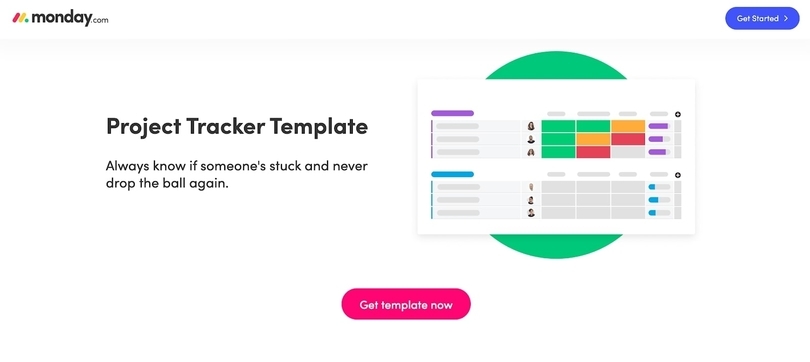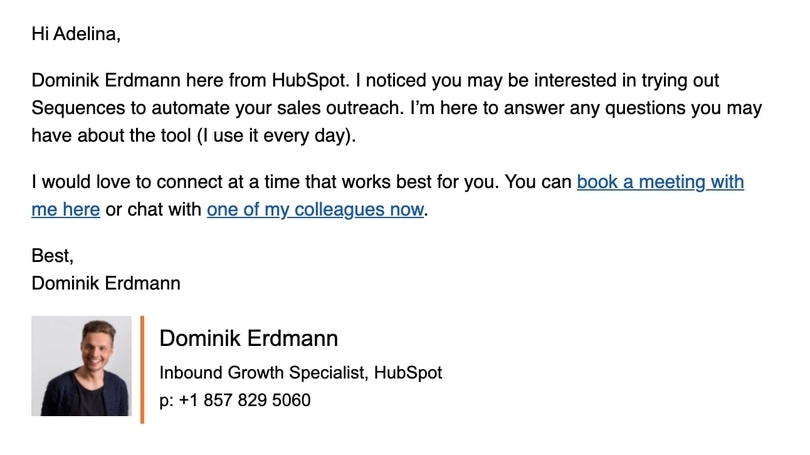Hello!
Attracting visitors to your website requires some effort, but it’s no rocket science. The most challenging part is moving your site visitors through the sales funnel right towards the purchase decision.
 People land on your website being in different stages of the customer journey. Some of them have recently encountered a problem and are still trying to define it.
People land on your website being in different stages of the customer journey. Some of them have recently encountered a problem and are still trying to define it.
Some are actively looking for the solution, but they aren’t ready to make a purchase yet. Others have looked through multiple alternatives and need a strong incentive to choose your company.
So how do you keep these people engaged and accelerate their purchase decision process? To answer the question, we’ve put together a list of actionable steps for converting more prospects into customers.
Align Your Marketing Efforts With the Buyer’s Journey
Let’s start with a deeper look at your buyer’s journey.
A purchase process is a journey consisting of different stages a prospective buyer goes through from the moment they become aware of their problem and to the decision to purchase.
 Every asset on your website should be designed for the specific stage in the customer journey. If you create a how-to article that introduces people to the subject, you should understand you’re targeting audiences in the awareness stage. In this case, your goal is to provide an in-depth guide into the subject and move them to the consideration stage, where they’ll be ready to have a look at the product you offer.
Every asset on your website should be designed for the specific stage in the customer journey. If you create a how-to article that introduces people to the subject, you should understand you’re targeting audiences in the awareness stage. In this case, your goal is to provide an in-depth guide into the subject and move them to the consideration stage, where they’ll be ready to have a look at the product you offer.
In simple terms, it’s not the best idea to call readers to book a demo of your product in the content of your how-to article. Instead, link to a case study where your customer shares a story of how they solved the problem that’s highlighted in the article with the help of your product.
The key to building a smooth customer journey on your website is interlinking content that’s developed for different stages of the journey.
The approach will allow you to retain prospects on the site and make them remember your brand.
Use Your Website to Generate Leads
To get a chance to connect with your site visitors after they leave, you need to collect their contact information. Yes, we talk about lead generation.
In case an introduction is needed, here it is:
Lead generation is a process of capturing prospects’ contact details with the help of a lead magnet. And a lead magnet is any asset you give away in exchange for a person’s email address or any other piece of information. While many businesses do lead generation, very few do it right.
We’ve already said you need to give something away to get the lead’s contact details. Most often, brands produce downloadable ebooks, templates, checklists, and reports to capture leads.
Generic ebooks might help to initiate some interest and even collect a bunch of emails, but they hardly ever bring prospects who have any potential to become your clients or customers.
When creating a lead magnet, think of how it’s relevant to your business offer. Does it make a prospect any closer to conversion? If not, even the most engaging idea of a lead magnet won’t deliver desired results.
Below, you see a template provided by monday.com, the project management tool. There are no questions left about the company’s target audience and their pain points, are there?
 The template attracts project managers who want to keep track of their team's projects from start to finish. It allows professionals to enjoy the benefits of a quality dashboard for project tracking but offers very limited functionality.
The template attracts project managers who want to keep track of their team's projects from start to finish. It allows professionals to enjoy the benefits of a quality dashboard for project tracking but offers very limited functionality.
To access more features, a person will need to upgrade to a paid plan of the tool.
Nurture Leads With Relevant Content
Keeping in touch with leads until they’re ready to buy will keep your company at the forefront of their minds.
For companies with long and winding customer journeys, educating prospects with targeted email campaigns plays a critical role.
You might need to create webinars, online courses, podcasts, white papers, and many more types of educational content to prove your company has the highest expertise among all your competitors.
But it’s not about bombarding your leads with articles and videos hoping any of them would appear to be relevant.
Segment your leads based on behavior signals
When you’ve built a mailing list, you can launch email campaigns right away… or segment your leads to create personalized emails for people with different needs and interests.
Behavioral segmentation involves utilizing data on behavioral patterns of people interacting with your website.
 Segmentation allows you to ensure your subscribers receive content that’s likely to draw their attention and move them closer to a purchase. To prove the point, we’ll just say that marketers who have used segmented campaigns have seen as much as a 760% increase in revenue.
Segmentation allows you to ensure your subscribers receive content that’s likely to draw their attention and move them closer to a purchase. To prove the point, we’ll just say that marketers who have used segmented campaigns have seen as much as a 760% increase in revenue.
Quality marketing automation software enables users to segment incoming leads automatically. Once a prospect leaves their email address on the site, they’ll be added to the relevant list based on the criteria you’ve specified.
Set Up Automation Triggers
You can build a workflow where your site visitors move from the awareness stage to the decision stage smoothly without extra effort from your side. How is it possible?
Automation triggers are the answer.
With a proper setup, every action a person takes on your site triggers the chain of events, like displaying personalized content, moving a contact to a different mailing list, launching targeted email campaigns, etc.
This workflow is most often applied to email marketing campaigns. If you own an eCommerce website, you can set up an automation that sends an abandoned cart email – a follow-up message for someone who has added an item to their shopping cart and left the site without purchasing.
SaaS companies use email automation to upsell free users. Once a user clicks on a feature accessible on a paid plan only, they’ll receive an email with a demo invitation.
Here’s an example of the triggered email from the HubSpot team:

If you do trigger marketing right, you’ll have more control over your relationships with prospects, increase response rates, and drive more sales.
Run Retargeting Campaigns
Retargeting is another working solution for converting more visitors into paying customers. 26% of customers return to a website through retargeting campaigns.
Use retargeting ads to reach users who have shown interest in your services and drive them to conversion.
You can either choose to retarget people who have taken specific action on your site (visited a product page, reached a contact form but didn’t leave a message, etc.) or the ones who have interacted with your email campaigns. To make the first scenario work, you’ll need to set up a tracking pixel on your website – a piece of code that will collect and store data on users who have met your criteria.
 When selecting a channel for running retargeting ads, pick the one(s) where your target audience is most active.
When selecting a channel for running retargeting ads, pick the one(s) where your target audience is most active.
Are you promoting a B2B product? LinkedIn, Quora, and Twitter might be a good choice.
Meanwhile, retargeting ads for eCommerce work particularly well on Facebook. Of course, you shouldn’t ignore image-based social media platforms, like Instagram and Pinterest, for advertising your B2C product.
Address Prospects’ Objections in Your Content
People don’t buy from your company for different reasons.
Here are the most common objections your prospects might have:
- ‘It’s too expensive.’
- ‘I’m happy with the competitor’s product.’
- ‘I’ve had negative experiences with a similar product.’
- ‘I don’t understand how it can help me.’
- ‘I don’t believe it can help me.’
Every company will have something else to add to this list, but the key idea is that the reasons why people choose one brand over another are very simple. It’s up to you to respond to these objections and ease your audience’s concerns.
 Instead of leaving this to your sales team, use your website to address prospects’ objections. While you might have mentioned plenty of product benefits on your landing pages, it can be that none of them is of interest to your audience.
Instead of leaving this to your sales team, use your website to address prospects’ objections. While you might have mentioned plenty of product benefits on your landing pages, it can be that none of them is of interest to your audience.
Share customer success stories, feature testimonials on the homepage, and add a FAQ section at the bottom of every product page.
Using stories and case studies in advertising campaigns is also highly effective for increasing conversions.
Regardless of the promotion method of your choice, anticipating objections and resolving them in your campaign content, be it a paid social ad or a blog post, should be your main focus.
Your Go-To Strategy for Accelerating The Buyer’s Journey
Let’s summarize the learnings:
- Your prospects discover your brand in different stages of their customer journey. Make sure you have something to share with each of them.
- Make the most out of your site traffic by using lead magnets.
- Segment your leads based on certain criteria and reach out to them with personalized email campaigns.
- Keep track of behavior signals and set up triggered workflows.
- Retarget your audience with paid advertising campaigns.
- Always keep your prospects’ objections in mind when creating content for your marketing campaigns. Address these objections with customer testimonials, case studies, etc.
By implementing the above-shared tips and strategies, you’ll see your prospects move down your conversion funnel and close faster.
- What is Branding and How to Accelerate Business Growth Using a Branding Service?
- 4K Video Downloader Review: Why It Is The Choice Of 11+ Million Users?
- 7 Safety Tips On Online Money Transfer
Thank you!
Subscribe to our newsletter! Join us on social networks!
See you!






